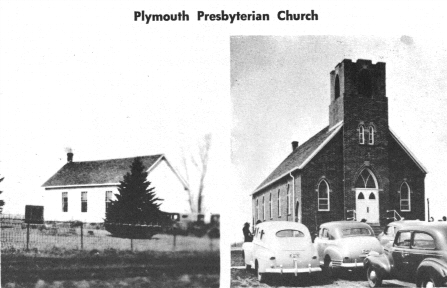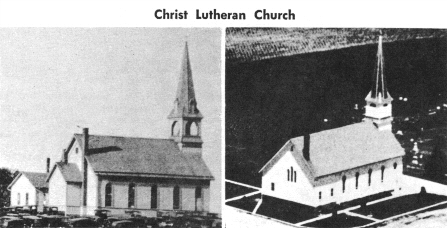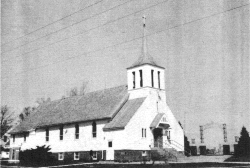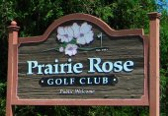Golden Jubillee Booklet - Chapter IV: Our Churches (Part I)
page 13 - 14
If it is true, as often been stated, that the small towns, villages, and hamlets are the backbone of America — then it is also true that the Church is the back- bone of the small towns, villages, and hamlets. The importance of the Church in the lives of the people who settled in these small communities can be shown by the close proximity of the dates on which these congregations were formed in comparison with the dates on which these towns were formed. One of the first things that our parents and grandparents did when they settled in these communities was to begin building a church. Often before their own homes were completed, a steeple with a cross at the top would be erected in their midst. This building, often crude but known henceforth as the "House Of God," was the unmistakable evidence of the Christian faith of those people — and the fact that it was usually one of the first to go up tells us today what came first in their sense of values.

One of the oldest churches in Plymouth County, and certainly as old as any in our community, is the one pictured above, Plymouth Presbyterian located four miles North and West of Brunsville. According to the published church history, this congregation was organized on Aug. 11, 1872. Following the organization by Rev. George R. Carroll, occasional services were held in various homes in the community. Later, under the leadership of Rev. D. W. James, the first church was built in 1880 at a cost of $517.56. Built during the ministry of Rev. E. W. Smith, the present building was dedicated July 26, 1930. The cost was about $13,000.00. The congregation has prospered and grown over the years and membership today numbers about 150 adults. The present pastor is Rev. C. R. Kruse who has served since 1954.

To be counted as among the oldest churches in our community and also probably the largest is Christ Lutheran. This church, located about four miles North of Brunsville like Plymouth Presbyterian, was founded in 1872. For the first three years of its existence, the congregation was served by traveling ministers. The first resident minister was the Rev. E. Beck who came in 1875 and served until 1877. In 1879, Christ Congregation erected a 24' by 36' building which served both as a parochial school and as a place of worship with pastors serving also as teachers until Fred Kusch was called in 1895. This old school building has since been moved to Brunsville and is used as a residence. Many improvements have been made in the church building since that time and at the present time the congregation is planning to add an education building and to enlarge the church vestibule. The present pastor, serving the church since 1957 is Rev. B. Nagel. Christ congregation numbers about 470 baptized members.

St. John Evangelical Lutheran Church
Located same 81/2 miles Northwest of Brunsville on a gentle rise from the fields around is another one of our beautiful white frame churches with a golden cross rising from the spire. Some seventy-two years ago, the Rev. F. Hefner traveled here from Coleridge, Nebraska and on March 11, 1889 a congregation was organized with 16 families. Later that same year, the congregation installed Rev. L. Lorenz to be the first resident pastor. Under his direction, the first church was -dedicated on Oct. 27, 1889. This building was so arranged so that the rear part was used as living quarters for the pastor and his family. It is interesting to note that one pastor, Rev. Theo. Meyer; served the church for 48 years. The congregation, which now numbers 323 souls, has been served by Rev. C. C. Guetzlaff since 1959.
